Brave Story
Introduction
Gonzo Digimation has been around for a fair while now, and they have made a reputation on action anime, combining traditional 2D animation with 3D CGI to produce explosions of eye candy that appeals to audiences all over the world. It's a sign of how influential they are that a significant proportion of anime sold has their logo on the front, and they serve in a smaller capacity on several other shows for other production houses. They came to my attention with the eye catching Kiddy Grade, and have continued to entertain with shows like Last Exile, Gantz, Burst Angel, Speed Grapher, Samurai 7, Basilisk, Afro Samurai, and most recently Welcome to the NHK, The Tower of Druaga: The Aegis of Uruk and Witchblade. It reads like an anime Hall of Fame, and while not everything appeals to every viewer, there is a little something for everyone in their filmography. Something that is, except for feature films. Surprisingly Gonzo have steered clear of film production for the better part of two decades, although they have contributed to films like Howl's Moving Castle and Tekkonkinkreet for other companies. That oversight was finally remedied in 2006, when Gonzo finally released their first two feature films, Origin: Spirits of the Past, followed six months later by Brave Story. In this summer of feature anime that we are enjoying this year, both films come to the UK, Origin is released this August by Manga Entertainment, while a couple of weeks later, Brave Story gets its English language DVD world premiere courtesy of Optimum. We've beaten both Region 1 and Region 4 to the punch here; a fact that's worth reiterating and it's with a certain degree of glee that I get to watch Brave Story.
Wataru is an eleven-year-old boy who has a fairly normal life, until the day his friend dares him to go on a ghost hunt in a building site. They get separated, and he finds a glowing gem. It belongs to a cloaked figure that is looking for someone named Aya. He takes the orb and then vanishes. Wataru looks up a set of stairs to see a pair of massive doors closing over an ethereal glow. When he tries to show his friend, the stairs and the doors have vanished. The next day at school, he meets the cloaked figure again, only it's an older student named Ashikawa. The mysterious and self-assured Ashikawa, and the timid Wataru strike up an unlikely friendship, especially after Wataru comes to Ashikawa's aid when the class bullies are tormenting him. It becomes apparent that there is more to Ashikawa when he demonstrates a talent for sorcery. He tells Wataru that passing through the door allows you to change your destiny, and it's what he intends to do. But then Wataru's life turns upside down. His father announces that he is leaving his family for another woman, and then his mother collapses from the stress. Seeing his family disintegrate, Wataru remembers his friend's words, and decides to step through the doorway.
He finds himself in a world called Vision, a place of magic and amazing creatures, a place where travellers such as himself, who are looking to change their destiny, are highly prized as good luck charms by the inhabitants. After being tested, he's given the trappings of a traveller, as well as a magical sword. If he can find and restore the gems to the sword, and climb the Tower of Fortune, the Goddess of Destiny will grant his most fervent wish. But the gems are more than just random jewels, and his bravery will be tested if he is to retrieve them. He's not the only one looking for them though, and some are more ruthless than others. As he travels through the world, making new friends and allies, he soon learns of the trail of destruction that Ashikawa is leaving behind him in his own search. Then Wataru learns that finding all the gems and making his wish may mean the ultimate destruction of Vision.
Picture
The 1.78:1 anamorphic transfer is very good indeed when it comes to anime. The image is clear and sharp throughout, there are surprisingly very few compression artefacts, given that there is around three hours of video on one disc, and only the slightest of judder in one or two pans is indicative of an NTSC-PAL conversion. Gonzo do what they do best, which is combine traditional 2D animation with extensive 3D CG to produce two hours of visual magic. The character designs are simple and stylised, but are believable throughout and serve the story well. Vision is a varied and visually impressive fantasy world with countless aspects, all shown here to excellent effect, and the action sequences are what Gonzo do best, so there is nothing to complain about there either.
Sound
The options available are DD 5.1 and 2.0 Japanese, along with a DD 2.0 Stereo English dub. There are optional translated subtitles should you feel the need. The surround track is the way to go, and not just for my perennial preference for the original language. Brave Story is an action packed film with plenty of usage of the surround speakers. The music from Juno Reactor (who I previously know for their industrial techno soundtrack for Texhnolyze), bring something a whole lot more orchestral and ethereal here, perfectly suited for the fairy-tale feel of the film. There is a problem with the English dub, although for once it's not the performances. The Japanese track actually feels part of the film, the characters are very much part of their environment, and you can feel the ambience. With the English dub, it feels as if it is layered on top of the film, and at no time did any of the characters actually sound 'there'. Everyone had the same recording booth quality to them.
Extras
Optimum impress by putting over an hour of extra features onto this disc without compromising the video quality of the main feature, which raises the question of why so many 90 minute anime discs come with compression artefacts and the like…
We Are Not A Couple lasts 24 minutes, and is a look at the ADR experience, as well as the promotion of the film from the viewpoint of two of the film's voice actors, Eiji Wentz, and Yo Oizumi. The cameras caught the moment they first met, and developed a banter that turned into a comedy routine beloved of PR execs, and so they were followed behind the scenes, to festivals, junkets and even to Cannes.
The 5 Jewels of Brave Story lasts 42 minutes, and is a somewhat more typical making of featurette. Eiji Wentz presents, and he begins by taking us to an anime convention in Los Angeles, and into the bedlam of an American Otaku's home, indicating just why Warners, Fuji TV, and Gonzo decided to make an anime film that would appeal to universal audiences. It's back to more familiar PR ground as we get to see the State Of The Art animation (their capitals), the Magicians of Sound (at Skywalker Ranch), the Dream Cast, and a look at the story and the theme of the film.
Both of these featurettes come in Japanese (along with on screen Japanese text), although there are English subtitles of course translating the meat of what needs to be communicated. A fascinating moment, and something of a reversal in the larger featurette were the moments where the sound designers and other English-speaking participants were interviewed. They would invariably get Japanese voiceovers which would necessitate English subtitles, but you can still make out the English being spoken sometimes, and the dual translation throws up some interesting differences.
Conclusion
If there is a case to be made against Brave Story, it's on a charge that can be levelled against a multitude of films, that of wandering into territory that has been marked by the likes of Disney and Ghibli. It invariably invites accusations of redundancy, of being a pale imitation, or a cheap knock-off. You hardly ever hear the accolade 'better than'. Well, Brave Story isn't better than the best of what those two studios have put out, but Gonzo have created a film which is as good as the better films that Hayao Miyazaki has made. If imitation is the sincerest form of flattery, then it would serve you well to make the best imitation that you can.
Brave Story is your classic fairy tale rites of passage, a cross between Spirited Away and The Neverending Story, with a garnish of RPG fantasy elements. Wataru is the timid child who when faced with the harsh realities of life seeks to escape them in a magical world. Like all children when faced with such adversity, he wishes for some magical device to make it all better, a genie to grant the wish. His journey is about learning to accept and deal with life head on. He isn't the only one on such a journey, and the story also takes the time to deliver a message on altruism versus selfishness. It's just the sort of thing that moral upstanding parents look for in a film to set an example for children, and unlike modern Hollywood efforts, there are no fart gags, or sly winks to the audience. This is unadulterated storytelling.
The message only works if you can't see it, and Brave Story has an excellent story to provide a distraction. Wataru is a likeable protagonist, timid without being whiny, and it's easy to empathise with the problems that he goes through. The prospect of his family falling apart is certainly a realistic motivation, and the idea of changing destiny by walking through a magic door would appeal to any child. Only in Brave Story, the door exists, and it leads to a magical world that is a delight for the senses. Vision is a world inhabited by animals in humanoid form, and as per any adventurer, Wataru soon gathers a group of friends to help him on his quest. The immediate impact comes from Ki-Kima, a lizard-like Water God who takes a shine to Wataru. He's the Jar-Jar of the movie, although if possible, in a good way. He's jovial, funny and likeable, and serves as a better comic relief than the Gungan ever did in Star Wars. Wataru also meets someone close to his own age in Miina, a cat acrobat who is looking for her father, and then there is Cutts, a Highlander sworn to serve justice and keep the peace, who initially suspects Wataru of thieving. As Wataru travels, he meets more and more people and begins to care about them and the world, as they help him achieve his potential, starting from a position of lowly traveller. In contrast, Ashikawa who is also looking to get a wish granted begins his journey as a powerful wizard, and quickly gathers more power. Unlike Wataru, his focus is solely on achieving his goal, and he doesn't care what he does to reach it. It's here that the film focuses on the perils of selfishness, and the way that the story develops is enthralling, given that both are such likeable characters.
Of course this is accomplished with Gonzo's considerable experience in action animation, and Brave Story is a joy to watch from beginning to end. Memorable character designs, intricate locations and settings, and awesome action set pieces build up to a visually satisfying finale. The elements may be familiar, but Brave Story puts them together in a cohesive, enthralling, entertaining way, different enough to separate it out from its ilk. The story is a straightforward fairy-tale fantasy with a meaningful message at its heart about growth and responsibility, as well as caring about your fellows. But it wouldn't be a fantasy without a touch of magic at its heart, and the film gets a wonderfully uplifting ending. Forget your Shreks and your Toy Stories, this is how family animation ought to be, and there's something for everyone here.
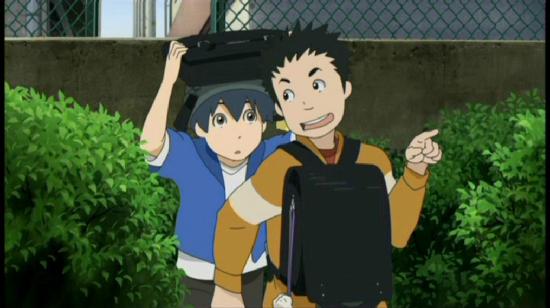
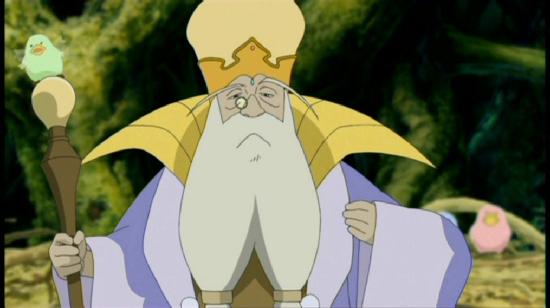
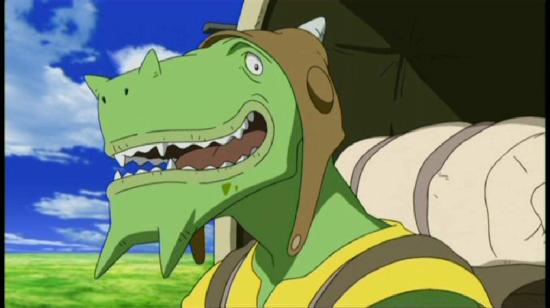
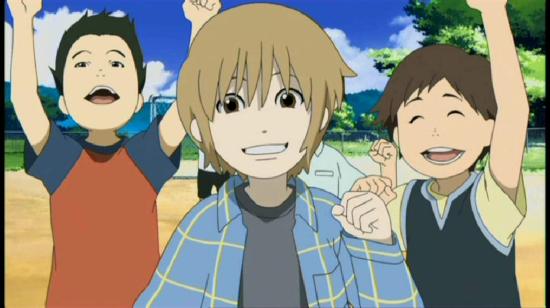
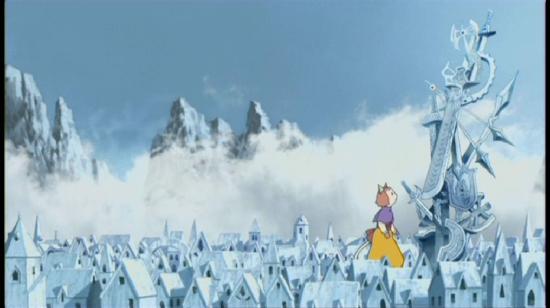
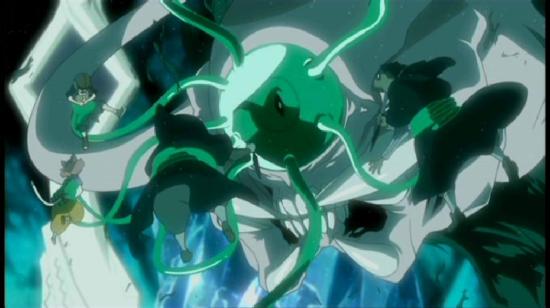
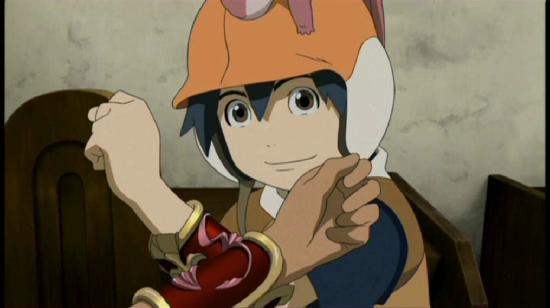
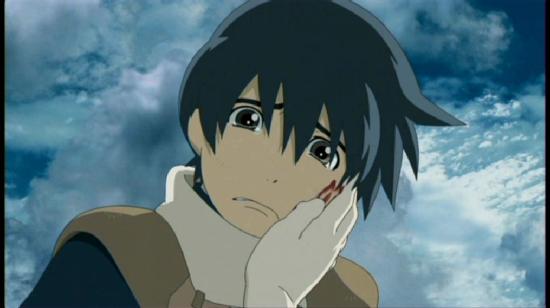
Your Opinions and Comments
Be the first to post a comment!